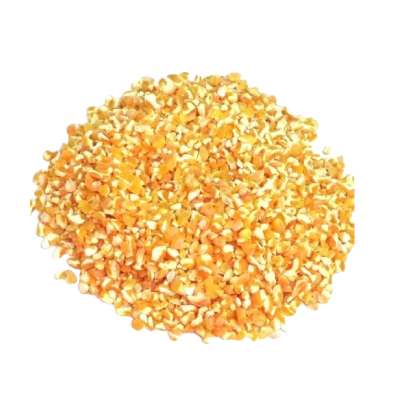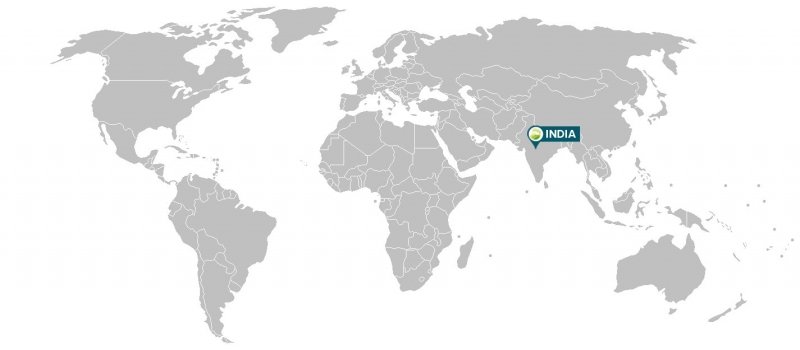Maize is commonly known as corn. It is the third largest crop in the world. Yellow maize is one of the most extensively cultivated cereal crops on Earth. This Yellow maize is used in various food industries and other industries. Primarily used for human consumption and animal feed. It offers high nutritional value, durability and purity.

Yellow corn is a variety of sweet corn. Its ears are wrapped in tightly bound lime hued husks with silks and a tassel that extend out from the tip. The yellow kernels are packed in tight almost uniform rows. A single ear of corn can contain up to 400 kernels. Freshly harvested yellow corn at its peak ripeness is sweet, offering flavors of almond and sugar, the kernels so succulent, the skin pops as you bite into it. As the corn matures, the kernels lose their milky consistency giving way to a starchy and doughy consistency. At this point, the corn is considered a grain crop and is best suited for processing or feedstock.
Yellow corn is available year-round.
Corn, scientific name Zea mays and known outside of English languages as simply maize, is a member of the grass family Gramineae. It is technically classified as a grain crop, though when harvested young it is treated as a vegetable. Its stalks produce a cob of seeds, which are better known as the kernels, though by botanical definition they are the individual fruits of the plant. Yellow corn is just one cultivar among thousands of corn varieties, heirloom, hybrid or genetically modified. Yellow corn is an evolutionary mutation of white corn. Most yellow corn in the commercial marketplace is a hybrid variety developed in the 20th century. The first hybrid yellow sweet corn, 'Redgreen' was released by the Connecticut Agricultural Experimental program in 1924.
Yellow corn is a significant resource of Vitamin A. As corn kernels mutated from white to yellow, they acquired chemicals called cartenoids. Of these cartenoids is beta carotene, which produces Vitamin A. Very little attention has been emphasized on yellow corn's significant beta carotene levels until the early 21st Century. Yellow corn, easy to grow in developing regions of Africa and Latin America, where corn is heavily relied upon as a food source, could actually keep millions of children from going blind. Yellow corn is now being bred to have at least 10 times higher the amount of beta carotene than average sweet corn varieties.
The less sweet corn is cooked, the better the flavor and texture. Yellow corn can be roasted, grilled, blanched, steamed, or pureed. Its bright and sweet flavors lend well to pastas and salads. It pairs well with tomatoes, basil cilantro, lobster, pork, chiles, truffles, shelling beans, cream, nutty cheeses, peas, summer squashes, fennel, citrus and scallops. Yellow corn is dried and ground into flour for baked goods, tortillas, cereals and used as a crust/crisping agent for dishes both savory and sweet. Corn is also used for oil, as a sweetener in foods and beverages and as a base for beverage alcohol.
Maize was the single most important crop of pre-Columbian North America. It formed the identities of the Mesoamericans & North Americans as a staple food source. The very first domesticated variety was white, though corn now grows in a variety of colors, including orange, red, and multi-colored corn. The ancestral source of sweet corn is an Andean corn, named Chullpi. This corn contains the quintessential sugary gene that identifies sweet corn as the best fresh eating corn. Though white corn is preferred for fresh eating eating in Latin cultures, yellow corn is most often used for masa and tortilla making. Yellow corn is the ubiquitous fresh eating and grain crop variety in Midwest and Northeast America.
Corn is native to the Americas, specifically Mexico. Wild corn was domesticated by indigenous Mesoamericans in prehistoric times. A wild grass, Teosinte (Zea Mexicana) is considered the ancestor of all known species of corn. Teosinte grows wild in remote areas of Mexico and Guatemala. The oldest known remains of corn were discovered in Mexico's Valley of Tehuacan, and dated 2750 BC, approximately 7,000 years old. Corn is still the number one grain crop grown in the Americas. It continues to be a significant source of food and now fuel security, providing at least 12 billion bushels annually for agricultural and industrial use. Not all corn is grown for fresh eating. Corn varieties are classified essentially by their purpose. The amount of starch in any given corn variety will determine if it is used for sweet corn, feedstock corn, popping corn, flour corn or biofuel corn among other designations.

